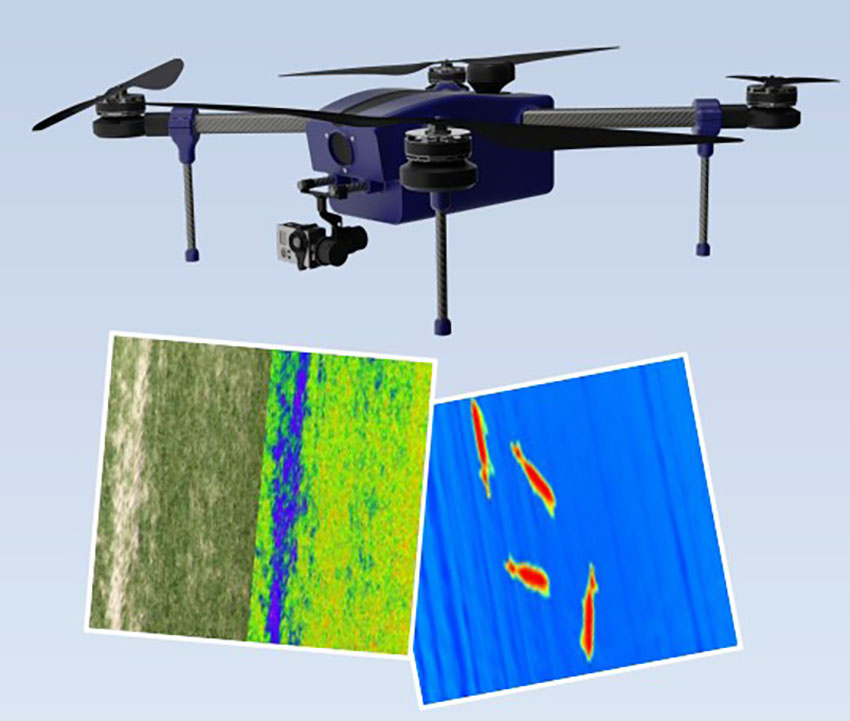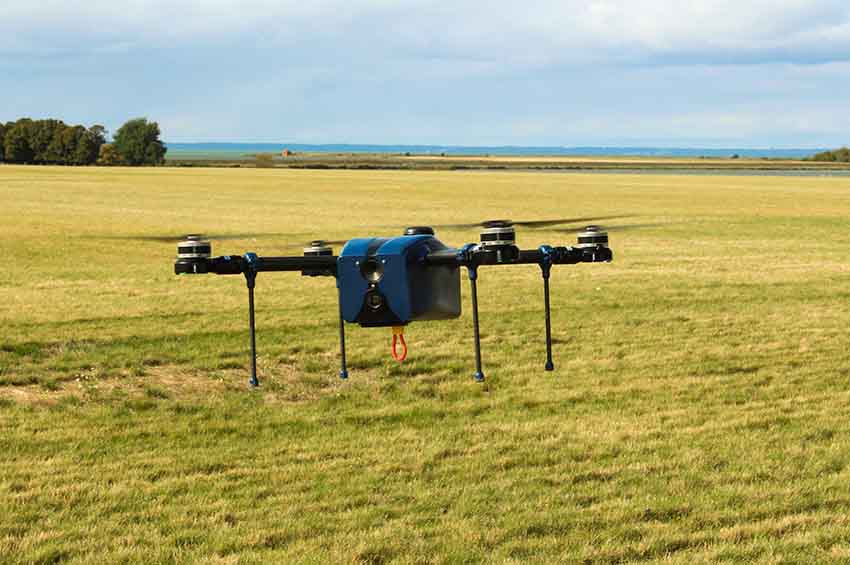NAUST Robotics is developing an autonomous drone-in-a-box solution for agriculture. From bird-scaring with integrated speakers to crop monitoring, the purpose of our drone is to be a modular and multipurpose device that helps the farmer achieve higher yields without consuming their time.
With a landing platform installed on the fields, the drone will be sheltered, controlled, and recharged without human interaction. Once the product is set, the farmer will only need to remotely supervise the operations from anywhere.
Interview with Guifré Vidal Alcaraz, Business Development & Sales at NAUST Robotics.
Easy Engineering: What are the main areas of activity of the company?
Guifré Vidal Alcaraz: NAUST Robotics is targeting agricultural fields of different kinds; arable crops, fruit and vegetables, livestock farms, etc. The damage caused by birds affects both plants and animals, and our drone with speakers can help lead the birds back to natural areas and protect the fields from yield lost, diseases, and stress on the animal farms.

E.E: What’s the news about new products?
G.V.A: Our manually operated drone is already on the market, targeting the bird-scaring segment. We serve mainly animal farms to be protected from wild birds diseases, excrements or food loss. Farmers are taught how to operate the drone in a few hours, including the necessary drone certificate to be able to pilot.
An app on the phone allows to change the sounds from the drone, allowing the farmer to scare different bird species effectively. Lastly, the automatic operation allows the user to select a flying route on the controller, and allowing the drone to fly automatically, from take-off to landing. In that way, the farmer does not need to be able to operate the drone, but just indicate the flying locations and let the drone drive itself.
E.E: What are the ranges of products?
G.V.A: In the future we aim to have a modular product that allows the farmer to select the equipment required for each case: multispectral cameras and software to detect weeds and optimize the use of fertilizers, thermal cameras to detect the location of deers before harvest, or conventional cameras to obtain periodical aerial images of your crops.

E.E: At what stage is the market where you are currently active?
G.V.A: NAUST Robotics has entered the markets of Denmark and Germany, as mentioned with the bird-scaring segment in livestock farms. Some free-range farms include a case in which birds such as crows stress the pigs by picking on them. Others use the drone to protect their animals from seagulls attacks and possible diseases like influenza. Stable farms suffer from crows eating the cows’ food, and dropping the excrements, drastically reducing the productivity of the animals, besides causing sickness to the youngest animals.
The range of problems caused by different birds can be extremely varied and overwhelming for a farmer to take care of by himself. We aim with our product to offer an effective method to keep farms safe, and keep the farmer focused on the tasks that matter.

Guifré Vidal Alcaraz, Business development & Sales at NAUST Robotics.
E.E: What can you tell us about market trends?
G.V.A: Several drone companies have attempted to enter the agricultural field with devices for bird scaring. However, the main obstacle is the compliance with legislation requirements in order to fly autonomously. NAUST Robotics is aware of this, and therefore works on a solution that operates on its own, saving time for the farmer to put in other tasks.
Regarding crop monitoring, satellite images are a common and cheap method for the farmer to visualize the crops. Nevertheless, these are not offering enough precision and frequency as a drone flying a few meters over the fields. Without accounting with weather conditions such as clouds, which make it rare in wet countries such as Denmark, to obtain periodical high quality images from satellites.

E.E: What are the most innovative products marketed?
G.V.A: Our portfolio right now only accounts with our drone for bird scaring.
E.E: What estimations do you have for 2023?
G.V.A: Work on all the legislation requirements (software and hardware – for example a parachute to ensure safe landing of the drone in case of shutdown) to be able to operate without physical presence of a pilot on the fields, but only remotely.

